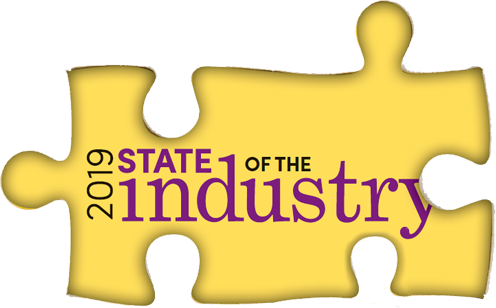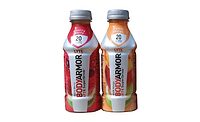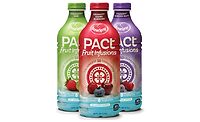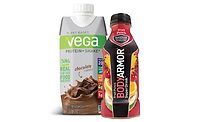As beverage blurring continues, the sports drink market faces stiff competition from other beverage categories. Market analysts remain mixed about the performance beverage category's ability to regain positioning as more factions have emerged within the beverage market.
“Sports drinks faced a sudden decline in sales in 2017 after achieving strong growth in previous years,” states Chicago-based Euromonitor International’s March report titled “Sports Drinks in the US.” “The story of sports drinks is similar to that of declining carbonates: the popular consensus that has decreased soda sales has reached sports drinks. Sugar content has become a major concern for consumers, and in view of the persistent decline of carbonates, it seems unlikely to go away.”
In Beverage Industry’s May issue, Karen Formanski, health and nutrition analyst for Chicago-based Mintel, also noted the challenges that sports drinks experienced in 2016-2017, but highlights that dollar sales did showcase a modest upward trend in 2017-2018. However, she does caution that future growth for the category is projected to be subtle.
“Consumers’ desire for general health and wellness bodes well for sports, nutrition and performance drinks; but due in part to increased cross-category competition, growth across these segments is likely to remain slow,” Formanski stated.
Formanski further elaborated about the impact that the growing functional beverage market is having on the sports drink category. “Consumers are seeking functionality from beverages in a growing number of categories, with functional water, coffee and tea invading the space historically ruled by more traditional sports, nutrition and performance drinks,” she said. “This will continue to put pressure on the sports, performance and nutrition drinks market.”
(Individual brands)
| DOLLAR SALES | % CHANGE VS. PRIOR YEAR | MARKET SHARE | % CHANGE VS. PRIOR YEAR | |
| Gatorade Perform | $1,849,288,777 | -9.8 | 28.1 | -4.9 |
| Gatorade | $950,918,319 | 20.9 | 14.4 | 1.8 |
| Gatorade Frost | $859,331,982 | 2.3 | 13.1 | -0.5 |
| Powerade Ion4 | $747,432,757 | -0.7 | 11.4 | -0.8 |
| BODYARMOR Superdrink | $310,397,674 | 127.2 | 4.7 | 2.5 |
| Powerade Zero Ion4 | $273,045,114 | 20.1 | 4.2 | 0.5 |
| Gatorade G2 Perform | $246,471,202 | -7.3 | 3.7 | -0.4 |
| G Zero | $223,935,918 | 3.4 | 3.4 | |
| Gatorade Fierce | $219,122,240 | -12.2 | 3.3 | -0.7 |
| Gatorade Flow | $196,468,870 | -10.9 | 3 | -0.6 |
| Category total* | $6,584,061,013 | 5.8 | 100 | — |
*Includes brands not listed.
Source: Information Resources Inc. (IRI), Chicago. Total U.S. supermarkets, drug stores, gas and convenience stores, mass merchandisers, military commissaries, and select club and dollar retail chains for the 52 weeks ending May 19.
Another factor affecting the sports drink market has been increased competition — threatening the two-brand dominance of the category.
“While not yet experiencing sales losses, the top sports drink players have seen a slight decline in market share from 2017-18,” Formanski stated. “The sports drink segment is extremely competitive, with new products targeting very specific consumers and occasions.”
Although many associate sports drinks with athletic activities, research shows that consumers increasingly are utilizing these products during very different drinking occasions.
“Despite the nomenclature and legacy association of sports drinks with specific athletic activities, more consumers note drinking beverages from this segment while doing chores such as yard work (35 percent) or relaxing at home (34 percent) than they do during a workout or while recovering from sports,” Mintel’s Formanski said.
Among consumers who do drink sports beverages when working out or playing sports, after-game consumption outperformed in-game, experts note.
“We have consumer data on consumption occasions only for the sports drinks segment,” Formanski added. “Amongst consumers who had purchased a sports drink in the past three months, 31 percent noted workout recovery as an occasion for drinking sports drinks, while 26 percent said they had consumed a sports drink during a workout.”
The after-workout focus commonly has been associated with the emerging protein drinks market, which increasingly is becoming more mainstream, experts note.
“Protein drinks are a niche category that have begun to move beyond the health food channel,” said Gary Hemphill, managing director of research for New York-based Beverage Marketing Corporation (BMC).
Mintel’s Formanski added that the amount of protein content is intriguing consumers to take a closer look at the sports and protein drinks category.
“Consumers of drinks in this category rate high protein content as the biggest motivator for purchasing,” she explains. “Some of the most successful brands use marketing focused on general healthy, active living, with an emphasis on the importance of protein that is in tune with consumer preferences.”
The protein drink space also is seeing an emergence of brands that are fortified plant-based proteins. Yet, plant-based proteins is not the only attribute gaining steam in the sports and protein drinks segments. Organic and natural positioning will play a large role in the future of these markets, experts note.
“The majority of consumers aged 18-54 feel that nutrition and performance drinks contain too many artificial ingredients, and major players will need to adapt,” Mintel’s Formanski said. “Emerging brands with all-natural ingredient profiles, along with enhanced waters that are inherently free of artificial ingredients, will continue to put pressure on sales of drinks in this category with more traditional formulations.” BI




